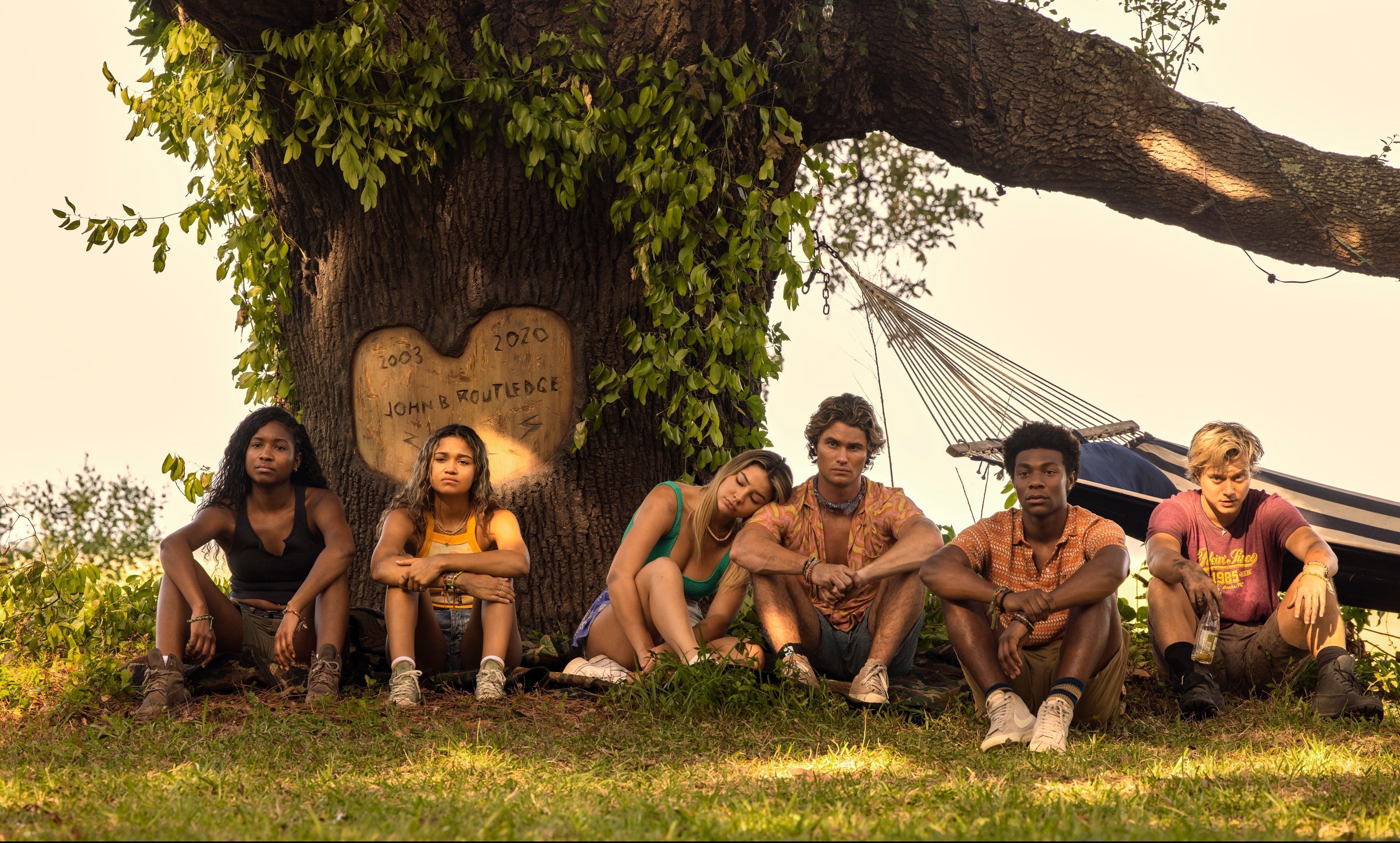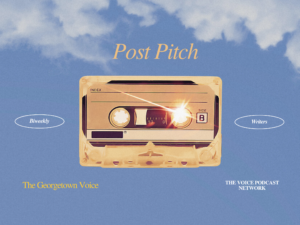“Every time we come back to film, it does feel familiar. It feels like coming home,” Madelyn Cline, who plays Sarah Cameron on the Netflix series Outer Banks, told the Voice. Ahead of the hit show’s third season release on Feb. 23, we had the opportunity to speak with Cline and Madison Bailey, who plays Kiara “Kie” Carrera, about season three, their experiences filming over the course of the pandemic, and their meteoric rise to fame in the process.
Outer Banks follows a group of teens and their continuous pursuit of a legendary gold treasure that was aboard the shipwrecked Royal Merchant. Protagonist John B Routledge (Chase Stokes) ropes his friends into this quest begun by his father, “Big John” (Charles Halford), who is presumed dead when the show begins and left behind his research about the gold. The kids’ journey starts on—and always returns to—the titular islands, which are divided geographically and economically into the “Kooks” and “Pogues”: the ultra-wealthy and the lower class that works for them.
The main ensemble began with John B and his best friends JJ Maybank (Rudy Pankow), Pope Heyward (Jonathan “JD” Daviss), and Kiara (Bailey). Unlike the boys, Kie has Kook parents who disapprove of her hanging out with Pogues. Along the way, they pick up Sarah (Cline), a Kook princess who falls in love with John B and joins the “Pogues for Life”—or “P4L”—group. In season two, Cleo (Carlacia Grant) comes into the mix when the Pogues follow the treasure to her home city of Nassau in the Bahamas.
For three seasons, the show has followed a rinse-and-repeat plot structure of the Pogues learning about more treasure connected to the Royal Merchant, competing with a new “big bad” adult to find it, having it stolen from under their noses, and then returning to the Outer Banks to face the consequences of the illegal and irresponsible acts they committed in the pursuit. This gets a bit repetitive, but what keeps viewers coming back are the friendships that withstand family divisions and high-stakes sparring about the gold, accompanied by genuinely hilarious banter.

Jackson Lee Davis/Netflix © 2023 Episode 301Jackson Lee Davis/Netflix © 2023
Season one was filmed in 2019, and came out on April 15 the following year—just one month after COVID-19 was declared a national emergency. The cast had to experience the success of Outer Banks from afar, and although they were deprived of a live premiere, they were able to engage with fans over social media.
“I feel grateful our show came out when it did, and I think we have a different relationship to our fans because of it, and a different closeness and relatability with our audience,” Bailey said. “I think it’s a positive way to remember the time you know, in such a hard time.”
Stunning shots of the Outer Banks (which were actually filmed in Charleston, South Carolina) and the action-packed, high-stakes treasure hunting provided much-needed escapism in the early months of 2020. During lockdown, people were able to find joy in the immersive nature of the show, as well as through various internet trends it spawned—many of which featured the soundtrack’s iconic song, “Left Hand Free” by alt-J.
“I’ve been tagged in TikToks or posts and it’ll be captioned something pertaining to how they feel nostalgic for like the first time ‘Left Hand Free’ would play,” Cline said. “[It’s] crazy because I feel like at the time, nobody wanted to feel nostalgic about it. We all wanted to be out of it.”
Outer Banks certainly plays on nostalgia, especially through its music. One standout moment this season is when Kiara hops on JJ’s motorbike, and the two ride away from her family’s Kook mansion as a drone shot tracks them from above, backed by The Backseat Lovers’ blood-pumping hit “Kilby Girl.” Episode eight boasts an original track, Joy Oladokun’s acoustic cover of Neil Young’s 1972 song “Out on the Weekend.” This plays while Sarah reconciles with John B and the Pogues after a brief Kook relapse, and Oladokun’s poignantly mournful voice laments what’s been lost as she delivers lyrics about packing up and moving on.
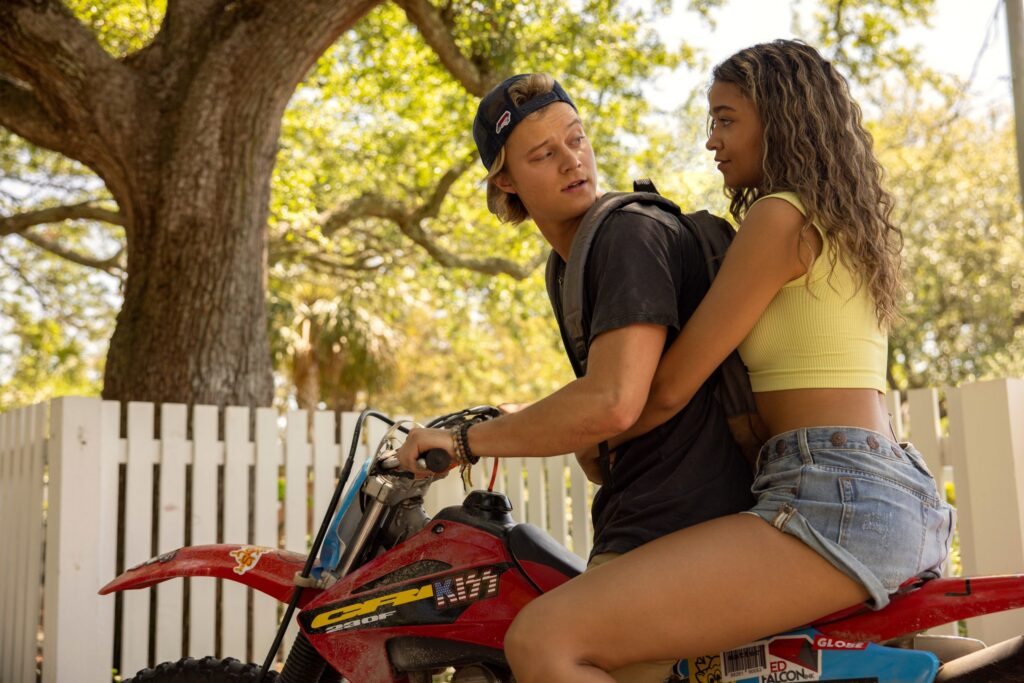
Jackson Lee Davis/Netflix © 2023 Episode 305Jackson Lee Davis/Netflix © 2023
The music alone transports viewers to the Outer Banks, taking us along for the teens’ adventures and making us feel the sun beating down on us, too; but the show itself is also inevitably reminiscent of quarantine, and the escapism it provided then still creates a similar sensation now.
“Outer Banks is ultimately like a mindset. Yeah, it’s a feeling,” Cline said. “And I don’t know, I just hope that people are able to still look at it with the same kind of fondness.”
The experience of having their show released during lockdown, and the whirlwind of fame that followed, created a unique bond between the cast palpable on screen. The audience feels like part of the Pogues while watching, like they’re in the know about the inside jokes and friendly ribbing they give one another.
“We’ve just developed our own lingo, but also just our own comfortability,” Bailey said. “This is a crazy shared experience to have, and like it only has made us closer. Because I mean, who else can relate to us, you know?”
Season three picks up on an island where the P4Ls have been marooned, which they’ve affectionately named “Poguelandia.” Of course, they don’t stay there long; they are kidnapped and flown to Barbados, and from there, they find their way home to the Outer Banks where most of this season takes place.
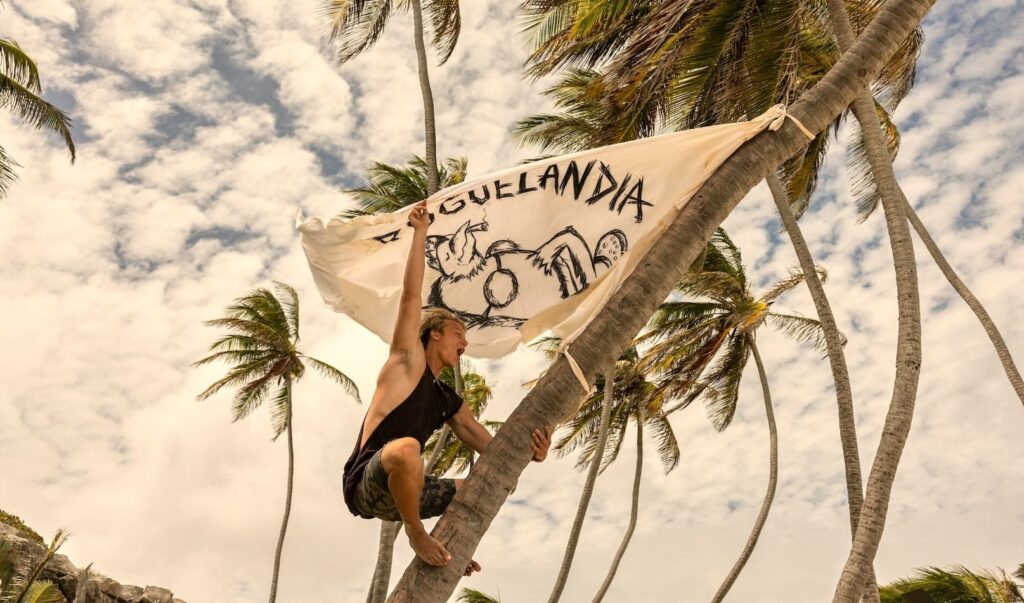
Jackson Lee Davis/Netflix © 2022 Episode 301Jackson Lee Davis/Netflix © 2022
Bailey and Cline’s characters, both individually and in tandem, have the most captivating arcs this season. They get to further explore their friendship, resulting in some heartwarmingly supportive and earnest moments as the young women try to balance romance, friendship, and family responsibilities. Kie and Sarah each vacillate between their Kook roots and their Pogue loyalties, embodying the teen TV trope of young people chafing against parental constraints in the process of self-exploration; but they deliver such strong performances that the cliché melts away.
“I feel like this season, Sarah is working through a lot, which is something I’ve asked for in past seasons,” Cline said. “Her life has just kind of been turned upside down, and there hasn’t really been any emotional recall for her, and she’s out her family. All of a sudden, she went from a world of very material, to a world that material meant nothing, and relationships and chosen family meant everything. And that’s a big change.” We even get an episode narrated by Sarah, finally giving us a deeper look into her interiority as she struggles between the temptation of her old life with her Kook ex-boyfriend Topper (Austin North) and her love for her chosen Pogue family.
Bailey echoed a similar sentiment about her character’s developing relationships with her family and friends, adding, “I feel like I relate to Kiara a lot when I was that age. I mean, being 24 now, things are a little different. But being 16, I feel like that was me fighting my parents when I was 16, and hanging out with my friends, and fighting for what I wanted. And I relate a lot to being young with a strong voice.”
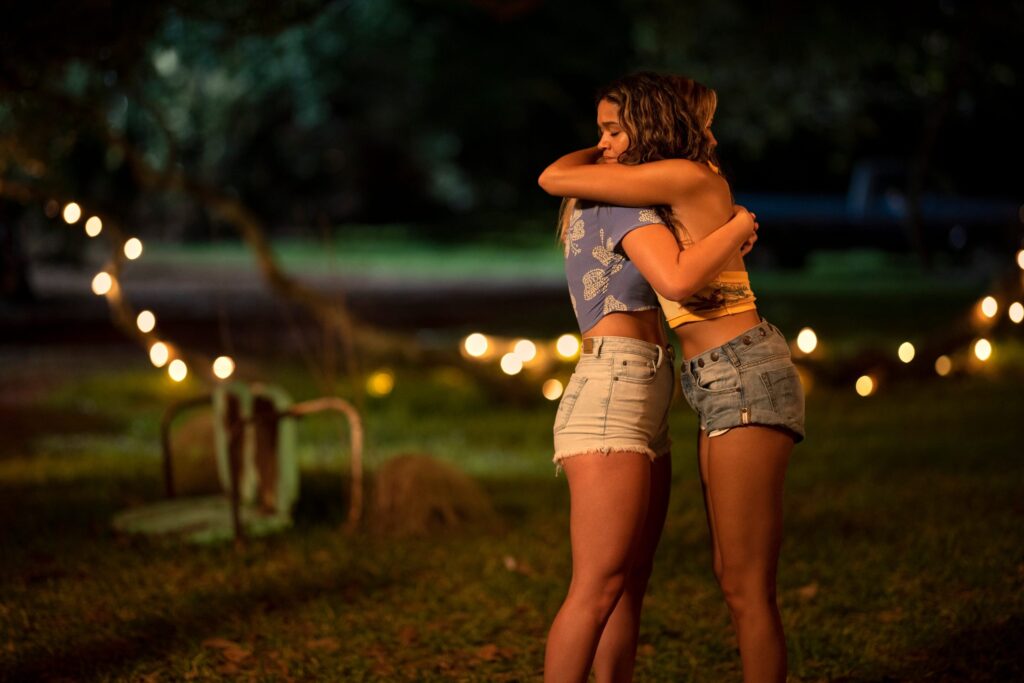
Jackson Lee Davis/Netflix © 2023 Cline and Bailey in episode 308Jackson Lee Davis/Netflix © 2023
Similarly strong-headed is new addition Cleo, a scrappy young woman fending for herself who becomes a much more formidable character this season. She first appears in season two as part of a ship’s crew that is holding fugitives John B and Sarah for ransom. Though she joined late, she fits right in and adds some much-needed outside perspective, feminine energy, and invaluable survival skills to the P4L group.
“I think [Cleo] brings a very crucial point of view to our Pogue and Kook story, and I think she has one of the most authentic Pogue stories. I mean, she lived the Pogue life,” Bailey said. “We thought we were living the Pogue life, but she’s actually doing it and did it, and I think she brings a lot of wisdom to the group and adds to our dynamic.” She also expressed high praise of Grant: “As [a] human being, Carlacia is amazing, and she’s so talented. We’re so lucky to have her on this show.”
Cleo finds a kindred spirit in Pope this season, as both of them are driven by strong moral compasses. Cleo also helps Pope convince his parents to let him continue searching for the treasure with his friends, which he is particularly passionate about due to the treasure’s origin. It was revealed in season two that his ancestor Denmark Tanny was an enslaved person aboard the Royal Merchant, and was the only survivor of the wreck, making him the owner of the gold. Pope follows clues that Tanny left for his descendants leading them toward the gold, telling his parents that it’s his legacy to fulfill.

Jackson Lee Davis/Netflix © 2023 Episode 309Jackson Lee Davis/Netflix © 2023
Season two deftly grappled with this history of enslavement and the idea of reparations through Pope as the P4Ls competed for the gold with Carla Limbrey (Elizabeth Mitchell)—a descendant of the ship captain for whom Tanny worked, and who ultimately killed Tanny and his family. One of the most moving scenes of season three occurs after Pope finds out that Rafe Cameron (Drew Starkey), Sarah’s older brother who’s loyal to their evil father Ward (Charles Esten), melted down a massive, one-of-a-kind, solid gold cross that belonged to Tanny; it was a priceless work of art, and Rafe turned it into gold bars to be liquidated into cash. Pope subsequently steals his father’s gun and tearfully points it at Rafe from afar, saying that people like the Camerons have been taking from his family for generations, but Cleo calmly talks him down.
Unfortunately, season three does not capitalize on its new villain’s potential for complexity or make a similarly powerful statement about the consequences of historical wrongs. Carlos Singh (Andy McQueen), a Barbadian don, pursues the teens and kidnaps the not-so-dead Big John for their knowledge of the gold. The owner of a huge estate and employer of dozens of mercenaries, he’s known as the “Kingfish,” but it’s unclear how he came into such wealth. He bears a South Asian last name, and mentions that his grandfather died on a gold-hunting expedition, which had the potential to inspire an impactful storyline given that there was a large number of indentured laborers sent from India to the Caribbean by the British government during the time period he describes; but this is not explicitly discussed at all. (He also says “you know” in every other sentence, which doesn’t make his vaguely Caribbean accent any more convincing.)
Luckily, the longtime Kook villains are further complicated this season, giving these previously one-dimensional characters new dynamism—the most notable being Rafe Cameron. Despite the fact that he’s a murderer, viewers can’t help but empathize with him as he squirms under the thumb of his abusive father. Starkey delivers one of the most compelling acting performances this season: In a scene paralleling Pope’s almost-murder of Rafe, close-up shots with a shaky handheld camera focus on the eldest Cameron as he points a gun at his father, trembling and tearing up, while Ward continues to manipulate him.
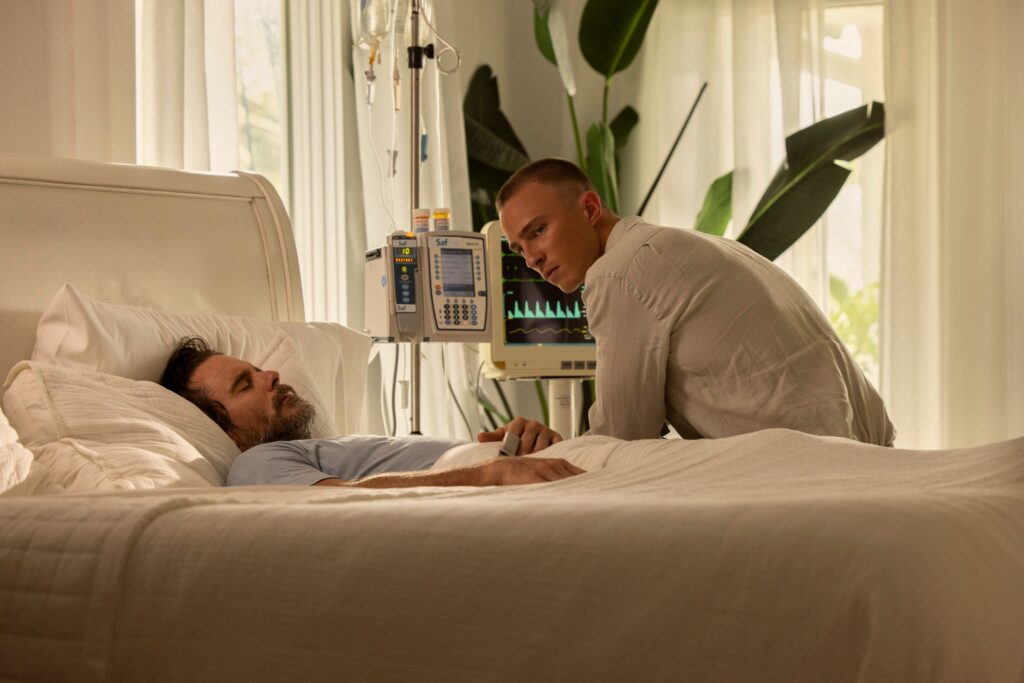
Jackson Lee Davis/Netflix © 2023 (L to R) Charles Esten as Ward Cameron, Drew Starkey as Rafe in episode 301Jackson Lee Davis/Netflix © 2023
Similarly, we get to see another side of Topper, who has only been known thus far as a Kook golden boy and notorious Pogue-hater (Topper, JJ, and John B had an iconic fist fight back in season one that established the Kook-Pogue rivalry). This season, Topper provides comfort and emotional support for Sarah—he even drives the getaway car in one of the P4Ls’ heists.
Topper’s development has been so drastic that when asked who her favorite character on the show was, Bailey presented his case: “Knowing the people behind their character, it’s gonna throw you off, but I will say Topper,” she said. “Stay with me, stay with me! Knowing Austin, and knowing how much of himself he brings to that character with simultaneously being nothing like that character, is such a funny dynamic. It makes me love that character so much, like, I’m lowkey rooting for Topper.”
Detracting from this compelling character work are the action sequences, and this season is even more heavy-handed with ludicrous physical feats. Bailey and Cline were very close-lipped about the specific stunts included in season three, which was not yet released at the time of the interview; but this season’s somehow topped those in the season two finale in which the cast performed their own stunts aboard the episode’s titular boat, The Coastal Venture.
“Chase ended up jumping in and saving my actual life, him and JD,” Bailey said of that episode, adding that she was treading water while carrying Pankow on her shoulder. “We didn’t shoot that on shore like we could’ve. And then I remember the boat pulled up where they’re supposed to pick [Pankow and me] up, and we’re just like, both drifting with the water. Like, they’re not getting any closer, we’re not getting any closer. And Chase and JD just jumped in and literally pulled me onto the boat.”
These scenes certainly get the adrenaline pumping, making the slower—read: romantic—scenes all the more satisfying for viewers to sink their teeth into. Conveniently, this friend group now contains three men and three women, all of whom like the opposite gender, making them easily coupled off (John B and Sarah have been on and off since the start, while Pope and Cleo have a romance brewing).
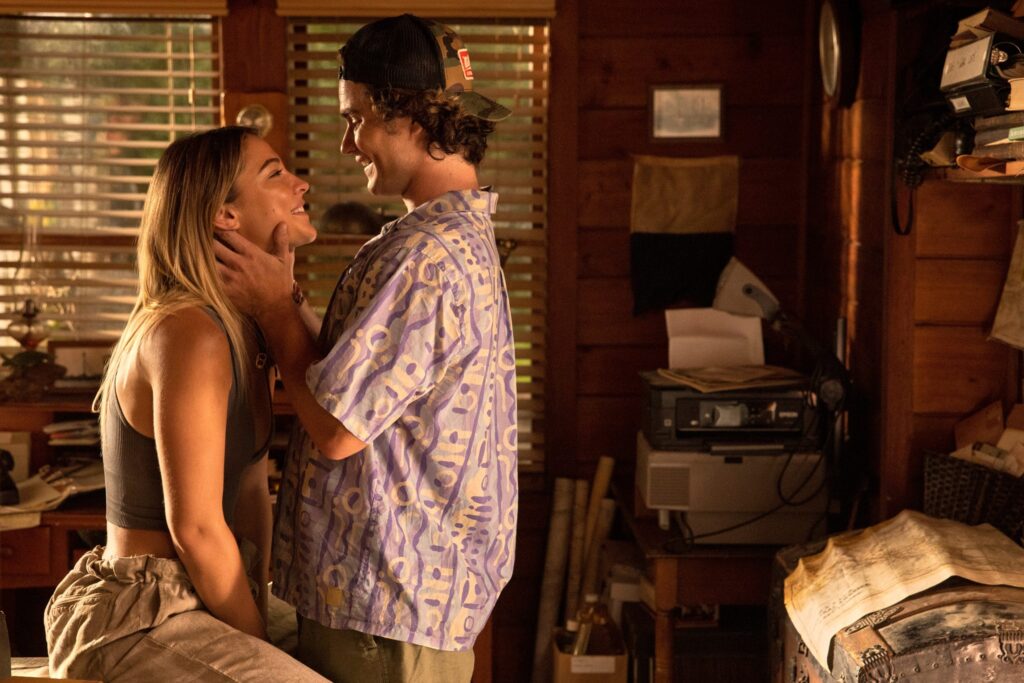
Jackson Lee Davis/Netflix © 2023 Episode 304Jackson Lee Davis/Netflix © 2023
The final pairing is the show’s slowest burn, and devoted fans (i.e. me) have been waiting for its fruition since season one. Bailey and Pankow have exhibited the most on-screen chemistry, but their characters’ relationship has always stalled because of JJ’s belief that he’s undeserving of Kiara—an assessment that the Carreras agree with. This season, the show directly tackles their class divide as Mr. Carrera berates JJ for having a bad influence on his daughter, adding that JJ will amount to nothing just like his father, and Kie has to decide where her loyalties lie.
“As we are seeking out that chemistry [between Kiara and JJ] and what that means, I think Kiara is in an interesting position this season,” Bailey said. “Kiara has always been the character with a foot in both worlds, but like, her foot’s only in that world because of her family.”
Though they get to explore more relationships, Sarah and Kie also respectively shine this season. Bailey and Cline reflected on what they bring to their own characters, and what they hope younger audiences will take away from watching. Cline in particular stressed the importance of introspection, encouraging young people to trust their gut.
“[Sarah’s] kind of beginning this journey of self-realization and becoming self-aware, and what she wants and learning how to speak up for that,” Cline said. “Sometimes that’s difficult, but it’s important. It’s a really, really important and empowering part of growing up.”
Bailey expressed a similar sentiment, urging viewers to remain strong in their resolve.
“Being young and knowing who you are is a scary thing, and people are going to tell you, you don’t know who you are,” she said. “And I will tell you, if you relate to Kiara’s character in knowing what she wants for herself, then I say fight for that always, and know thyself, you know? And fight for yourself.”
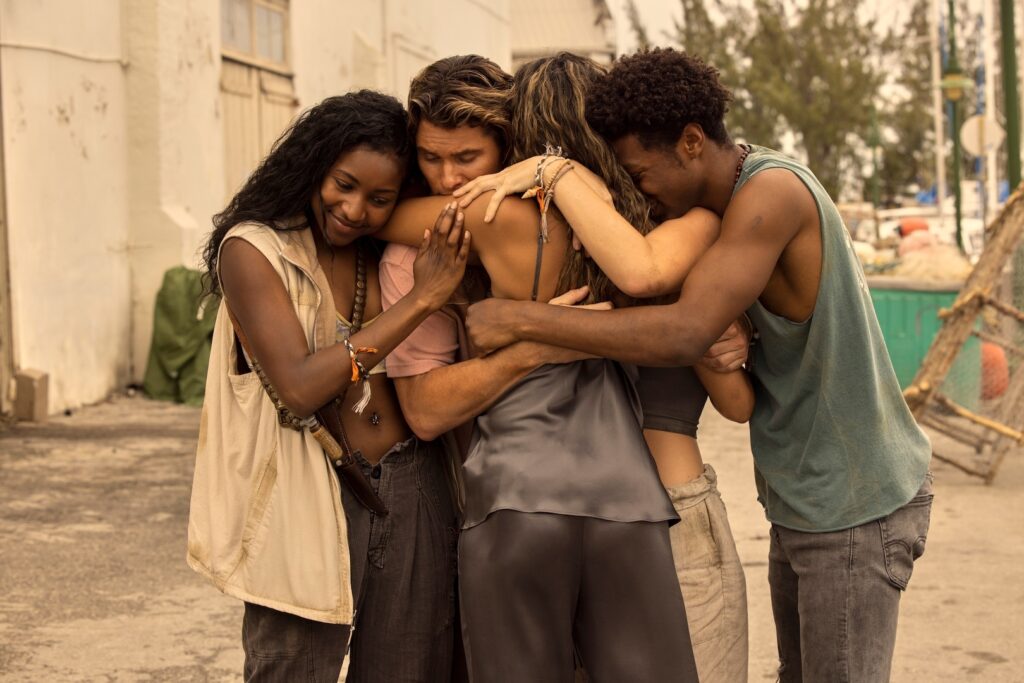
Jackson Lee Davis/Netflix © 2023 Episode 302Jackson Lee Davis/Netflix © 2023


